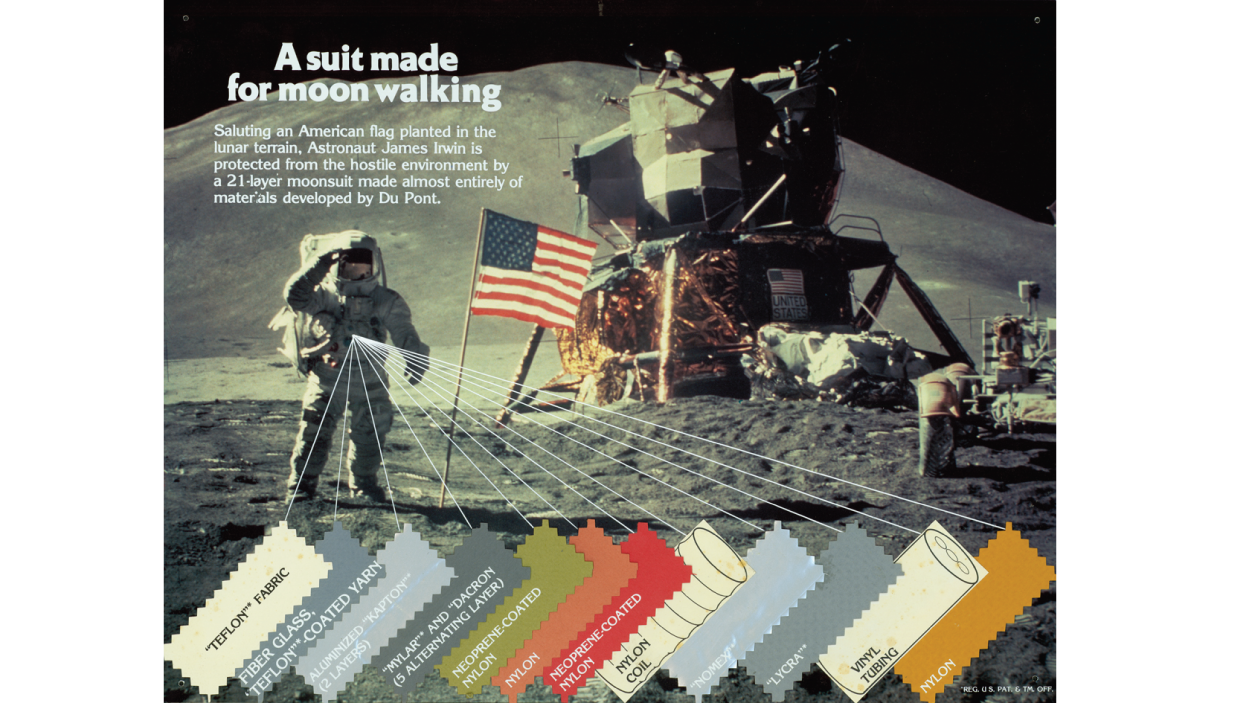Apollo 11: How Innovation and Partnership Prepared us for Space
Article | July 18, 2019
On July 20, as we celebrate the 50th anniversary of the Apollo 11 moon landing, we are reminded of how much work went into making sure that our NASA astronauts traveled to the moon and back safely.
Apollo 11 showcases the unprecedented collective efforts of hundreds of companies and agencies to protect lives in space, a feat which could only have been achieved when innovative science and collaboration were put to the service of an important goal.
Since the birth of manned space flight, DuPont has been along for the ride with products essential for protection, lighter weight, reduced volume, durability and environmental resistance. On Earth, those innovations that led us farther into space continue to adapt and extend into new innovations for today and tomorrow. DuPont’s purpose is empowering the world with the essential innovations to thrive, and innovation-led growth is core to the company’s business strategy, working with customers around the world to power big things, like space telescopes, and small things, like smartphones.

For the Apollo 11 mission to the moon, 20 of the 21 layers in each space suit were made with DuPont inventions, including DuPont™ Nomex® fiber and Kapton® polyimide film. The first material to touch the lunar surface was Kapton®, and the U.S. flag placed on the moon was made of DuPont nylon.

The first material to touch the lunar surface was Kapton®.
For the Apollo 11 mission to the moon, 20 of the 21 layers in each space suit were made with DuPont inventions, including DuPont™ Nomex® fiber and Kapton® polyimide film. The first material to touch the lunar surface was Kapton®, and the U.S. flag placed on the moon was made of DuPont nylon.
To meet today’s challenges, we continue in the spirit of the Apollo era, as private enterprise and government work inclusively to achieve the remarkable innovations that benefit us all now.
For example, DuPont’s lightweight, flexible materials are remaking the cardiovascular system of satellites, putting global broadband within reach. Today, communication companies are engaged in a new race as the Internet of Things, 5G, and other burgeoning technologies drive demand for high-speed communications. As scientists make that promise a reality, our semiconductor materials and products like Kapton® will remain key building blocks, and more revolutionary than ever. When it comes to smartphones and tablets, our materials enable faster, thinner, more powerful devices that can do more than ever before.
As satellites keep advancing, they change the technology landscape on Earth, from improving the GPS in your phone to providing first-time broadband to parts of the developing world. When the James Webb Space Telescope launches in 2021, it will allow us to study every phase of cosmic history. We may not be the scientists who will be studying the telescope’s findings, but we’re the scientists who have researched and developed materials enabling them to do so. In the James Webb there are two key materials that DuPont invented and manufactures: DuPont™ Kapton® and Kevlar® fiber.
And right now, NASA pillow-packs made with Kevlar® are making it possible for astronauts to grow their own vegetables in space. Those packs need to be light-weight, high strength and highly temperature resistant—attributes of Kevlar®, the same product that protects our first responders here on Earth.
As we remember Apollo 11, we salute the pioneers of space, along with the thousands of people and hundreds of companies and organizations who have and continue to work to advance innovation and protect those who journey there.
Learn more about these DuPont brands:


